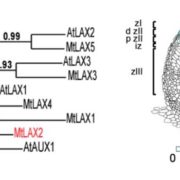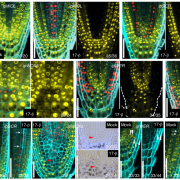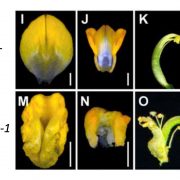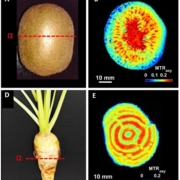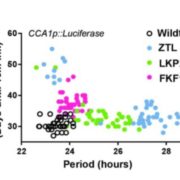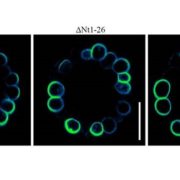Esculin, a Sucrose Proxy for Phloem Transport
 The study of phloem transport and its vital roles in long distance communication and carbon allocation have been hampered by a lack of suitable tools that allow high-throughput, real-time studies. Since the 1970s, several studies have used 11C or 14C isotopes to measure rates of phloem transport in large plants. This was usually achieved by placing two or more Geiger-Muller tubes along the phloem pathway to track the movement of the radioactive solute front. These studies, however, have limited resolution and are not suitable for use on very small plants or seedlings, such as Arabidopsis. Knox et al. (10.1104/pp.18.00574) report that esculin, a fluorescent coumarin glucoside, is specifically loaded into the phloem of Arabidopsis by the sucrose transporter AtSUC2 and does not enter the phloem in atsuc2 knockout seedlings, making it an ideal tool for use in live-imaging experiments where it acts as a surrogate for sucrose. The authors have used esculin to determine the effect of different environmental cues on the velocity of phloem transport. They provide evidence that fluctuations in cotyledon sucrose levels influence phloem velocity rapidly, supporting the pressure-flow model of phloem transport. Under acute changes in light levels the phloem velocity mirrored changes in the expression of AtSUC2. This observation suggests that under certain environmental conditions, transcriptional regulation may affect the abundance of AtSUC2, and thus regulate the phloem transport velocity.
The study of phloem transport and its vital roles in long distance communication and carbon allocation have been hampered by a lack of suitable tools that allow high-throughput, real-time studies. Since the 1970s, several studies have used 11C or 14C isotopes to measure rates of phloem transport in large plants. This was usually achieved by placing two or more Geiger-Muller tubes along the phloem pathway to track the movement of the radioactive solute front. These studies, however, have limited resolution and are not suitable for use on very small plants or seedlings, such as Arabidopsis. Knox et al. (10.1104/pp.18.00574) report that esculin, a fluorescent coumarin glucoside, is specifically loaded into the phloem of Arabidopsis by the sucrose transporter AtSUC2 and does not enter the phloem in atsuc2 knockout seedlings, making it an ideal tool for use in live-imaging experiments where it acts as a surrogate for sucrose. The authors have used esculin to determine the effect of different environmental cues on the velocity of phloem transport. They provide evidence that fluctuations in cotyledon sucrose levels influence phloem velocity rapidly, supporting the pressure-flow model of phloem transport. Under acute changes in light levels the phloem velocity mirrored changes in the expression of AtSUC2. This observation suggests that under certain environmental conditions, transcriptional regulation may affect the abundance of AtSUC2, and thus regulate the phloem transport velocity.


